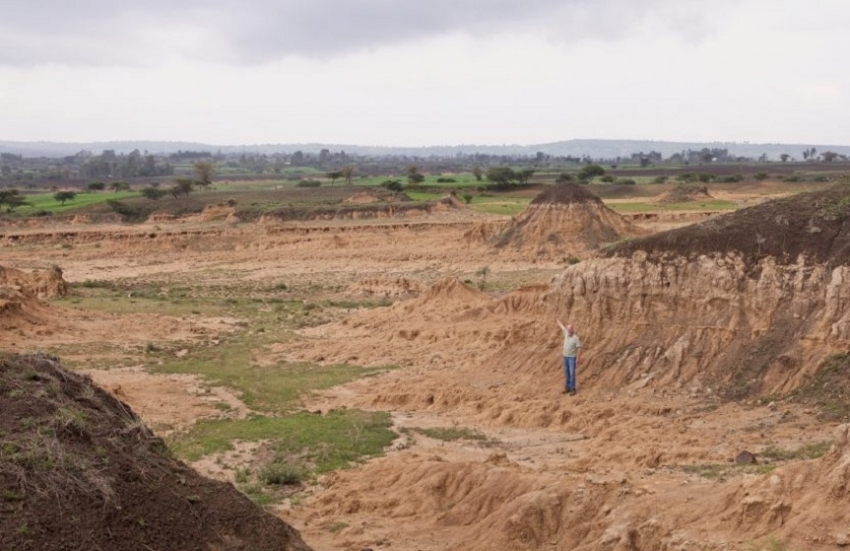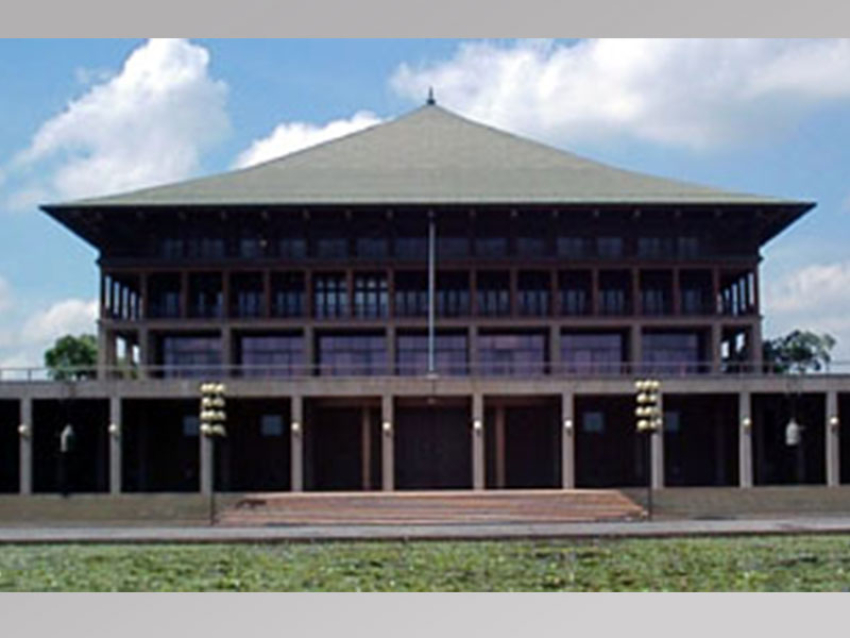The dirt beneath our feet is getting poorer and on many farms worldwide, there is less and less of it.Without sufficient soil, our ability to grow food is threatened.In Iowa they call it “black gold” – a fertile blanket covering the landlocked Midwestern state. Thousands of years of prairie grass growth, death and decomposition have left a thick layer of dark, organic matter on the vast plains. When European-American settlers first began ploughing in Iowa, they found the weather and local geology had combined this organic mulch with sand and silt to form a nutrient-rich type of soil called loam. It gave Iowa one of the most fertile soils on the planet and enabled it to become one of the largest producers of corn, soybeans and oats in the United States over the last 160 or so years. But beneath the feet of Iowa’s farmers, a crisis is unfolding. The average topsoil depth in Iowa decreased from around 14-18 inches (35-45cm) at the start of the 20th Century to 6-8 inches (15-20cm) by its end. Relentless tilling and disturbance from farm vehicles have allowed wind and water to whisk away this priceless resource.
The same picture is seen on farms worldwide. Soils are becoming severely degraded due to a combination of intensive farming practices and natural processes. As the layer of fertile topsoil thins, it gets increasingly difficult to grow crops for food. Without altering agricultural practices and urgently finding ways to preserve soil, the global food supply starts to look precarious. Even in Iowa’s still-fertile fields, the loss of soil is concerning. In just one spring in 2014, Iowa lost nearly 14 million tonnes of soil from its cropland in a series of storms, according to environmental groups. A study of 82 sites in 21 counties by Iowa State University showed that in the 50 years from 1959, soil structure and levels of organic matter had degraded while acidity had increased. “Erosion from the wind is not as bad as it used to be in the dust bowl era, but in the past 20 years the rainfall pattern has changed,” says Paula Ellis, a farmer in south-east Iowa’s Lee County. “We used to get one to two inches of rain every other week, but now we are getting bigger rain events where six inches fall and that hits the soil on farms.”
The problems facing Iowa are by no means unique. According to the United Nations’ Food and Agricultural Organization (FAO), a third of the world’s soil is now moderately to highly degraded.The processes that generate high-quality, fertile topsoil can take centuries. But the world is ploughing through that resource at an alarming rate. About 40% of the world's land has already been taken over by agriculture, while livestock grazing and expanding urban areas are taking further chunks out of what is left over.
At first glance, it might seem that there is no shortage of mud and dirt around the world. But it's the quality that really counts.
“Many types of soil degradation are invisible,” says Ronald Vargas, secretary of the global soil partnership at the FAO in Rome. “You just don’t see the loss of organic carbon from soils or pollution building up in it until you try to plant crops there.”
Erosion, compaction, nutrient imbalance, pollution, acidification, water logging, loss of soil biodiversity and increasing salinity have been affecting soil across the globe, reducing its ability to support plant life and so grow crops.
At the most extreme end, 12 million hectares of land – an area that could produce the equivalent of 20 tonnes of grain annually – are lost to desertification every year. Meanwhile, the spread of our towns, cities and road networks are sealing soils out of reach beneath layers of asphalt and concrete.
According to some estimates, between one billion and six billion hectares of land are now considered to be degraded. But the problems vary greatly from region to region. In a handful of places, this degradation has happened naturally, says Vargas.
“There are some places where the landscape can be compared to the Moon,” he says. “But human activity has led to unsustainable levels of degradation.”
Climate change, the spread of intensive agriculture, deforestation and industrial activity have accelerated the loss of soils in almost every country in the world. Farming practices such as tilling break up the soil and destroy its natural structure, killing many of the vital bacteria and fungi that live there and leaving it vulnerable to being washed away.
“Soil is not just useful for helping us grow food,” says Vargas. “[Soils] are key for storing water – good soil is like a sponge that soaks up the rain and keeps it there. It is important for recycling nutrients and storing carbon that would otherwise escape into the atmosphere.”
If we want to continue enjoying the riches of our soils in the future, something urgently needs to be done.
00:01 / 02:12
Rachel Stoer points to two crops growing side by side. Both are types of wheat, each with the characteristic stiff, grassy stems and ears heavy with seeds. To the untrained eye, perhaps the only difference is that one appears stockier and is tipped with a denser head of grain.
Underground, however, the differences are more apparent. One of the grasses produces a slender tendril of roots that penetrates barely a couple of feet (0.5m) beneath the surface. The other is a thick, intertwined mat extending nearly 10ft (3m) down.
This second wheat is a domesticated variety of wild wheatgrass known as Thinopyrum intermedium, which can be found growing naturally across central Europe and western Asia. It is rangier than conventional wheat and it has smaller seeds packed less densely in a far more elongated head. The biggest difference, however, is that it is perennial.
This means that unlike conventional wheat, which dies off each year and so needs to be replanted with fresh seeds before each growing season, this wheatgrass will regrow without having to be re-sown. It could be a solution to one of the major causes of soil degradation.
“Anytime you till the soil, it destroys the natural ecosystem that exists in it,” says Stroer, chief strategy officer at the Land Institute, an agricultural research organisation based in Salina, Kansas, which has been domesticating wild wheatgrass into a product called Kernza. “With perennial plants, there is far less need to till.”
There are other benefits too. Established perennial grasses provide less opportunities for weeds to grow in a field, says Stroer.
“Tilling the soil loosens it and serves as a welcome mat for weeds,” she says. With their extensive root networks, perennials are often more able to cope with periods of drought and can help to hold the soil together, preventing erosion of this precious resource.
“We believe that perennial planting is the closest we can come to restoring the soil to a state that has existed for millions of years on our planet,” says Stroer. “Every native landscape on the planet has a mixture of perennials growing on it for good reason.”
The Land Institute is attempting to develop a new generation of perennial crops that can supplement and even replace our existing annual crops. In addition to Kernza, it is also developing perennial rice, legumes and sorghum, a popular grain in Africa and South Asia.
Perennial crops are far from a perfect solution though. The oldest strands of Kernza in the Land Institute’s test fields are 10 years old. They now produce little in the way of seeds.
“Yields begin to tail off after about three to four years,” says Stroer. It means the plants would need to be replaced after that point to ensure decent crop yields. “It is something we are working on.
“But we have seen some perennial rice crops in China that have lasted five years and given 10 harvests. That kind of time frame can make a big difference to the soil.”
The real test, of course, will be how consumers accept these new crops. There are already some promising signs. Although Kernza tastes more like rye than traditional wheat flour, it has attracted a following from those making artisan bread, while a number of food producers have begun using it to make pasta and pizza bases. It has even been adopted in craft beer brewing, producing an ale with a nutty flavour.
“Currently it works well when mixed with conventional wheat,” says Stroer. “But we are hoping through our breeding programme to get it to be more like wheat has been for the past 100 years or so.”
In the interim, there are other approaches that could help to restore some of the vitality that is being stripped from farmland soils.
“It is about careful husbandry, which involves paying attention to the chemical, physical and biological aspects of the soil so they are kept in balance,” says Elizabeth Stockdale, head of farming systems at the National Institute of Agricultural Botany in Cambridge, UK. She has been developing tools to help farmers assess and improve the health of their soils.
“We want to increase the proportion of the year that the soil actively has roots in it and plants growing above it,” says Stockdale. It might sound counterintuitive at first, but planting vegetation in soil between crops can help to hold it together to prevent erosion. It can also provide vital nutrients to the organisms living in the earth. “The photosynthesis from cover crops and intercropping helps to feed the soil system and keep the biology there active.”
But while this works in areas that still retain some of their original fertility, what do you do in areas where the soil has become completely exhausted?
Living systems
Soil is largely made up of grains of weathered rock and the remains of dead, decayed plants. But it is far from an inert, lifeless substance. Soil is a living system bursting with microbes, fungi, insects, worms and other invertebrates. These all play important roles in breaking down material, delivering nutrients to plants and maintaining soil fertility.
Pump in pesticides or excessive amounts of inorganic fertilisers – which often contain heavy metals that can accumulate in the soil – and this living system begins to suffer.
Matthew Wallenstein, head of crop soil science at Colorado State University, thinks he may have a way of tackling this problem. With the help of modern robotics, he and his colleagues have been screening millions of microbes found naturally in soils from around the globe to identify bacteria that can bring degraded soils back to life.
“Many agricultural soils contain huge amounts of phosphorous that has been added in fertilisers and then locked away,” he says. “My group has identified microbes that are especially good at making this phosphorous in soil available to plants.”
They have found a mixture of microbes that can enhance the natural rhizosphere – the communities of microorganisms that live in the soil around plant roots, gobbling up secretions from the plants and serving up nutrients to them in return. This invisible ecosystem is an often-overlooked aspect of plant growth and most plants cannot grow without it.
Wallenstein and his colleagues have set up a company called Growcentia that is developing cocktails of soil microbes to enhance soils and improve plant health. “These microbial products could jump start the processes that lead to regeneration,” says Wallenstein.
One company taking this approach a step further is Indigo Agriculture. The Boston-based firm coats seeds in beneficial microbes in the hope of giving young plants their own ready-made microbiome that will boost the nutrients they receive as they grow, while also acting as a first line of defence against diseases.
Coating seeds with pesticides or micronutrients is already a fairly common, if relatively new, approach in the agricultural industry. But adding microorganisms is more unusual, partly because they have a limited shelf life.
Indigo claims that by drying the microbes and mixing them with a polymer on the surface of the seeds, they can be stored for months, if not years, before they are sown. So far, the company says the results have been good.
“We have seen a 14% increase in cotton and 13% improvement in wheat,” says Geoff von Maltzahn, Indigo’s chief executive at Indigo. “The crops require less input from farmers too, which creates less waste and pollutants in the system.”
Adding microbes and nutrients can only rejuvenate soil if there is still some left on the ground. What happens if water and wind has swept away the soil completely?
New ground
In the shadow of the Santa Catalina Mountains, about 24 miles (38km) north of Tucson, Arizona, is a vast glass structure. The glazed domes and pyramids look like they have been transplanted into the arid mountain foothills from a science fiction film set.
Outside the buildings grow the characteristic barrel cactus and prickly pear that stud the dry Arizona landscape. Inside, however, rainforests, mangroves, savannah grassland and even a coral reef flourish in their own separate biospheres.
Built in the early 1990s, the structure – known as Biosphere 2 – was originally designed to test whether humans could survive in a closed ecosystem like those that might be needed to colonise other planets. Today it is owned and managed by the University of Arizona.
Here scientists are studying the conditions that are needed to create new soil in an experiment called the Landscape Evolution Observatory. Three independent landscapes, each created from 500 tonnes of crushed basalt rock that was extracted from a volcanic crater in northern Arizona, have been created inside the Biosphere. Devoid of organisms, these landscapes are a blank canvas for the researchers.
Each one covers an area of 3,500 sq ft (325 sq m) and has a 10-degree slope that converges into a gully – a landscape similar to those found in the uplands of the south-western US. More than 1,800 sensors and sampling devices are installed on, above and within the landscape to monitor the physical and chemical changes in each of them.
Overhead sprinkler systems mimic rainfall and weathering of the bare basalt soil. Over time the scientists will add microorganisms and plants to the soil to watch how their roots, leaf litter and decaying material changes the soil. They hope to understand how landscapes and their soils evolve over time under different climatic conditions. They are also hoping to measure how much carbon dioxide soils are able to absorb as they weather.
“The evolution of a fertile soil, either from parent rock material or from a degraded system, is mediated by a complex set of tightly interwoven hydrological, geochemical, geomorphic and biological processes,” says John Adams, deputy director of Biosphere 2 at the University of Arizona.
Understanding these from the microscopic to landscape scale over a few seconds to millennia, is key to “eco-engineering” degraded soils, he says.
Back in Iowa, many farmers are attempting to protect and rebuild their precious black gold. Researchers at Iowa State University have been working with farmers to plant “prairie strips” on part of their fields. In return for a subsidy, farmers dedicate 10% of each crop field to native perennial grasses and plants that providing a valuable habitat for wildlife and pollinators. The strips also seem to help restore the soil.
Research has shown that the prairie strips can generate a 20-fold reduction in the amount of sediment being washed off fields. They also retain more nitrogen and phosphorous by helping to reduce the amount of water from running off the surface.
“The basic idea behind prairie strips is using the Midwest’s native ecosystem to improve our currently dominant corn-soybean agroecosystems,” says Lisa Schulte-Moore, co-leader of the project trialling their use.
Around 600 acres (242 hectares) of prairie strips have been created on around 65 farms in Iowa and some surrounding states. To create a prairie strip, farmers plant a mixture of plant species on part of their fields and leave it for two or three years to take root.
After this they have to actively maintain the integrity of the prairie by burning, mowing or grazing to help prevent annual weeds and invasive woody plants from taking over.The researchers are now monitoring how the strips of prairie may alter soil health in the longer term.
“If a farmer terminates a prairie strip after it has been in place for five to 10 years, we know the soil health has been improved. But we want to know whether the crop will benefit from this and how long will that last,” says Rick Cruse, an expert in soil management at Iowa State University who is also involved in the project. “What we envisage is that the farmer would move the strip to another part of the field and that would then be enriched. It could be a gamechanger for some farmers.”
On Paula Ellis’s farm in Iowa’s Lee County, she and her husband have been continuing a no-till farming approach that her father started almost 40 years ago. They also use cover crops like rye to keep plants growing on the soil at all times and have buffer strips similar to the prairie strips close to the creeks in their fields to help reduce run-off.
“You can really see a difference in the healthiness of the soil,” says Ellis. “It has a better structure. On the farms nearby that work up their ground all the time, you just don’t see that nice rich soil and it turns really hard and rocky.“There is still a lot of work to be done. We have to do everything we can to keep our soil.”




















